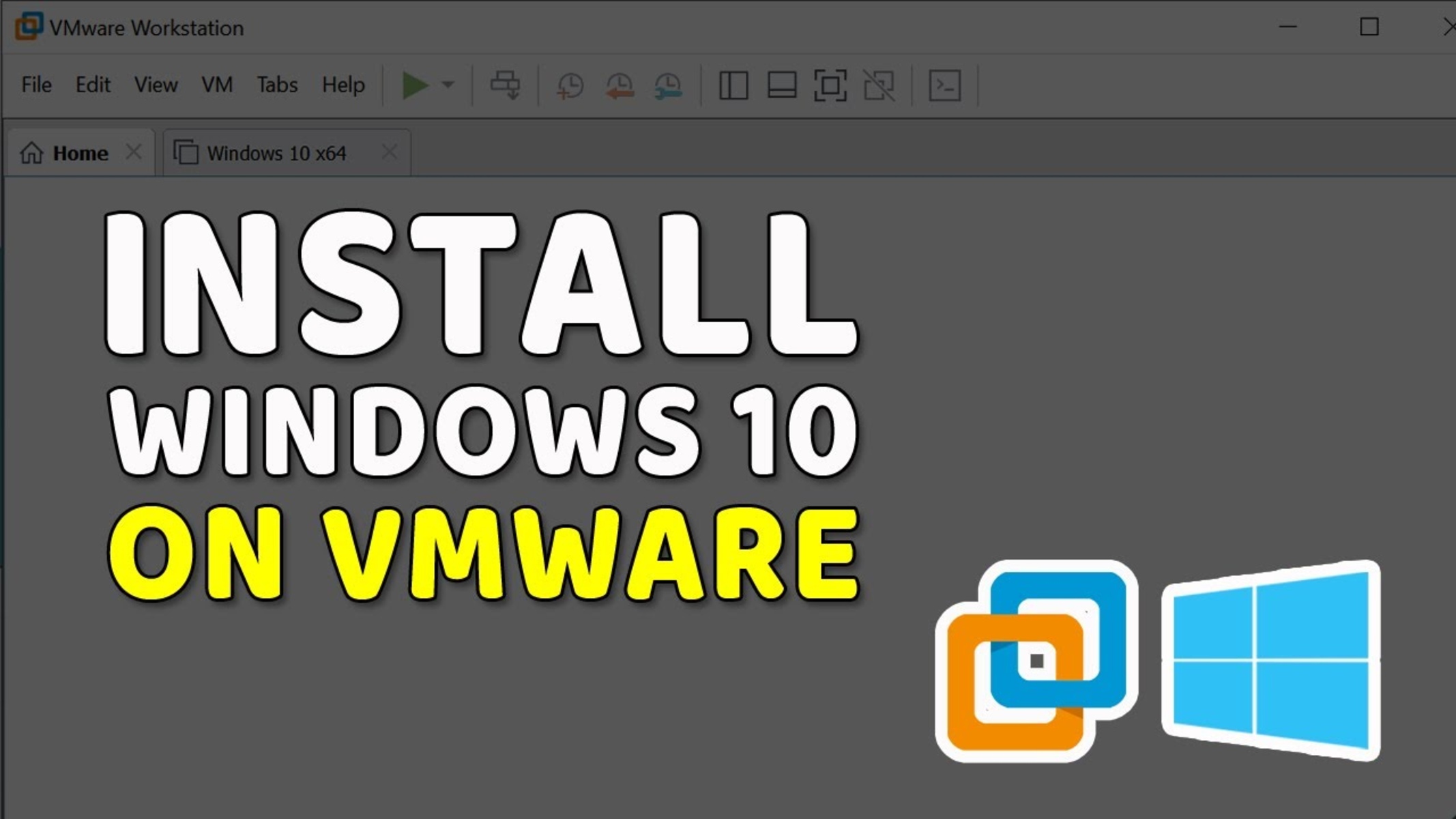Introduction
Welcome to this guide on how to suspend a VMware Workstation 12 virtual machine (VM) from the command line. Suspending a VM is a useful feature that allows you to pause the VM’s operation and free up system resources, while maintaining the VM’s state. Whether you need to temporarily pause a running VM for a quick break or want to conserve power without shutting it down, the command line offers a convenient way to achieve this without relying on the VMware Workstation graphical interface.
By following the steps outlined in this tutorial, you will learn how to suspend a VMware Workstation 12 VM using the command prompt. Before we dive into the process, it’s essential to ensure some prerequisites are met to successfully execute the commands.
To make the most of this tutorial, you should have basic knowledge of using the command prompt or command line interface (CLI) on your operating system. Familiarity with VMware Workstation 12 and its installation directory structure is also necessary.
So, let’s get started and suspend your VMware Workstation 12 VMs from the command line!
Prerequisites
Before we proceed with the steps to suspend a VMware Workstation 12 virtual machine (VM) from the command line, there are a few prerequisites that need to be fulfilled. These prerequisites ensure that you have the necessary tools and access to complete the process successfully.
1. VMware Workstation 12: Ensure that you have VMware Workstation 12 installed on your system. This tutorial focuses on VMware Workstation 12, so make sure you have the correct version installed.
2. Operating System: This tutorial assumes you are using a Windows operating system. The steps may vary slightly for other operating systems such as macOS or Linux.
3. Command Prompt: Familiarize yourself with the command prompt or command line interface (CLI) on your Windows system. You will be executing commands in the command prompt to suspend the VM.
4. Know the VM Name: Make a note of the VM name for which you want to execute the suspend command. You will need the exact name of the VM to suspend it successfully.
5. Administrative Privileges: Ensure that you have administrative privileges or sufficient permissions to suspend VMs on your system. The commands used in the command prompt require administrative access to perform the suspension.
Once you have taken care of these prerequisites, you are ready to proceed to the next section where we will delve into the steps to suspend a VMware Workstation 12 VM from the command line. Keep in mind the prerequisites mentioned above to ensure a smooth and successful execution of the commands.
Step 1: Open Command Prompt
In order to suspend a VMware Workstation 12 virtual machine (VM) from the command line, you need to start by opening the Command Prompt on your Windows system. The Command Prompt is the command-line interpreter that allows you to execute commands and interact with your operating system.
To launch Command Prompt, follow these steps:
- Press the Windows key on your keyboard or click on the Start button in the taskbar.
- Type “Command Prompt” in the search bar.
- Click on the Command Prompt app in the search results. This will open a new Command Prompt window.
Alternatively, you can also open the Command Prompt by pressing the Windows key + R to open the Run dialog box, then typing “cmd” in the text field, and finally clicking the OK button.
Once the Command Prompt window is open and ready, you can proceed to the next step to navigate to the VMware Workstation installation directory.
Note: The Command Prompt may also be referred to as the Command Line or CMD.
Step 2: Navigate to the VMware Workstation Installation Directory
In order to suspend a VMware Workstation 12 virtual machine (VM) from the command line, you need to navigate to the installation directory where VMware Workstation is installed. This is where the necessary executable files for performing operations on VMs are located.
Follow these steps to navigate to the VMware Workstation installation directory:
- Open the Command Prompt by following the steps mentioned in Step 1.
- Once the Command Prompt window is open, you can use the
cdcommand (change directory) to navigate to the installation directory. The default installation directory for VMware Workstation 12 isC:\Program Files (x86)\VMware\VMware Workstation, though it may vary depending on your system configuration and installation settings. - Type the following command and press Enter:
cd C:\Program Files (x86)\VMware\VMware WorkstationNote: If you have installed VMware Workstation in a different location, replace the above directory path with the correct one.
After executing the command, the Command Prompt will change the directory to the specified location. This indicates that you have successfully navigated to the VMware Workstation installation directory.
With the navigation step completed, you’re now ready to proceed to the next step, which is suspending the desired virtual machine.
Step 3: Suspend the VM
Now that you have navigated to the VMware Workstation installation directory, it’s time to suspend the desired virtual machine (VM) from the command line. Suspending a VM will pause its operation, preserving its current state while freeing up system resources.
Follow these steps to suspend a VMware Workstation 12 VM:
- In the Command Prompt window, ensure that you are still in the VMware Workstation installation directory. If not, use the
cdcommand to navigate to the correct directory, as mentioned in Step 2. - Type the following command and press Enter:
vmrun suspend "path_to_vm.vmx"Replace “path_to_vm.vmx” with the actual path to your virtual machine’s VMX file. The VMX file contains the configuration details of the VM.
For example, if your VM’s VMX file is located at “C:\Virtual Machines\MyVM\MyVM.vmx“, the command would be:
vmrun suspend "C:\Virtual Machines\MyVM\MyVM.vmx"Executing the above command will initiate the suspend operation on the specified VM. The VM will now be in a suspended state, and its operation will be temporarily paused.
Once the VM is successfully suspended, you can proceed to the next step to verify its suspended state.
Note: Ensure that you have administrative privileges or sufficient permissions to execute the suspension command.
Step 4: Verify the Suspended State of the VM
After suspending a VMware Workstation 12 virtual machine (VM) from the command line, it’s important to verify that the VM is indeed in the suspended state. This step ensures that the suspension operation was successful and that the VM is no longer consuming system resources.
Follow these steps to verify the suspended state of the VM:
- In the Command Prompt window, ensure that you are still in the VMware Workstation installation directory. If not, use the
cdcommand to navigate to the correct directory as mentioned in Step 2. - Type the following command and press Enter:
vmrun listExecuting this command will display a list of all the running VMs and their current states. If your VM is successfully suspended, it will not be listed in the output.
You can cross-check the list to ensure that the desired VM is not present. If it is not listed, congratulations! Your VM has been successfully suspended using the command line.
It’s essential to verify the suspended state as it allows you to confirm that the VM is no longer consuming system resources and is in a paused state. This provides peace of mind and ensures that you can safely resume the VM when needed without any issues.
Now that you have verified the suspended state of the VM, you have successfully completed the process of suspending a VMware Workstation 12 VM from the command line.
Conclusion
Congratulations! You have successfully learned how to suspend a VMware Workstation 12 virtual machine (VM) from the command line. Suspending a VM offers the convenience of pausing its operation while preserving its state and freeing up system resources.
In this guide, we covered the necessary steps to suspend a VM using the command prompt. We started with opening the Command Prompt, navigating to the VMware Workstation installation directory, and executing the suspend command on the desired VM. Finally, we verified the suspended state of the VM to ensure the successful completion of the suspension process.
By utilizing the power of the command line interface, you have gained another method to manage your virtual machines efficiently. Whether you want to take a quick break from a running VM or conserve power without shutting it down, suspending a VM from the command line provides a convenient solution.
Remember to familiarize yourself with the command prompt or command line interface on your operating system. This will enable you to maximize the potential of performing various operations on VMware Workstation 12 VMs from the command line.
Thank you for following along with this guide. We hope that you found it informative and that it helps streamline your VM management workflow. Feel free to experiment and explore further possibilities with VMware Workstation 12 and its command line capabilities!

























